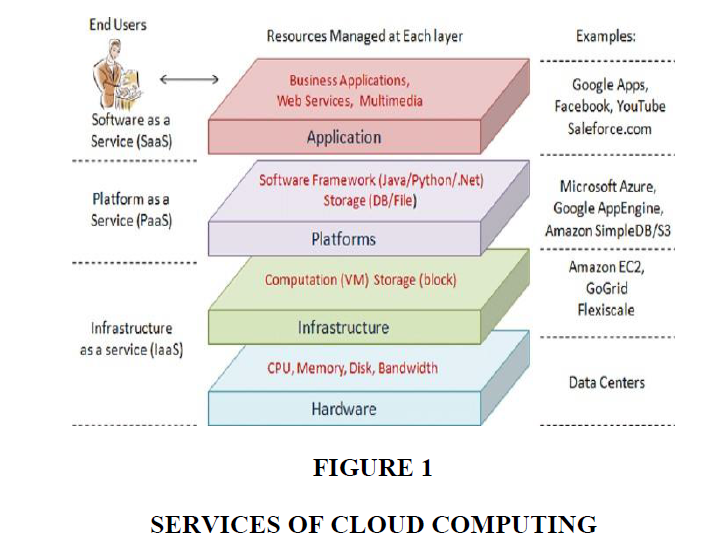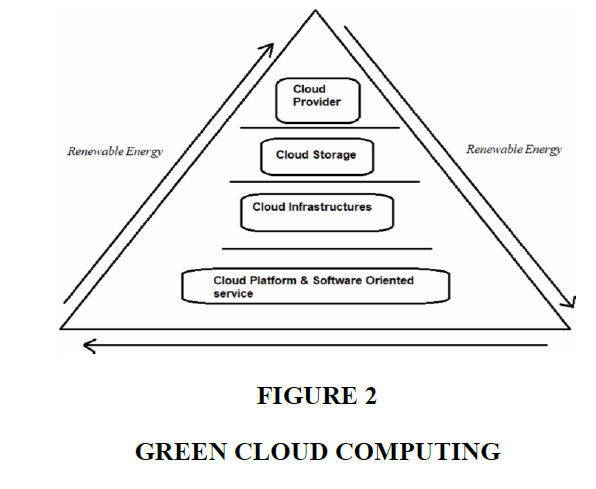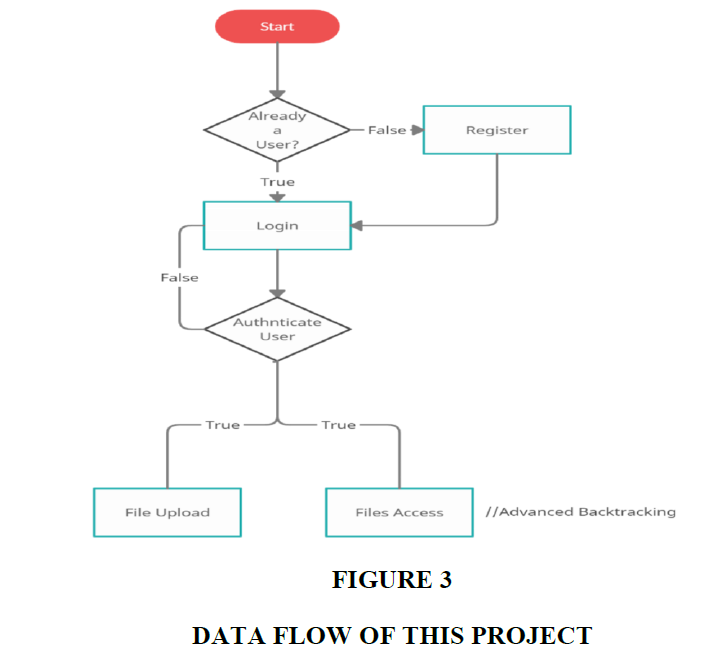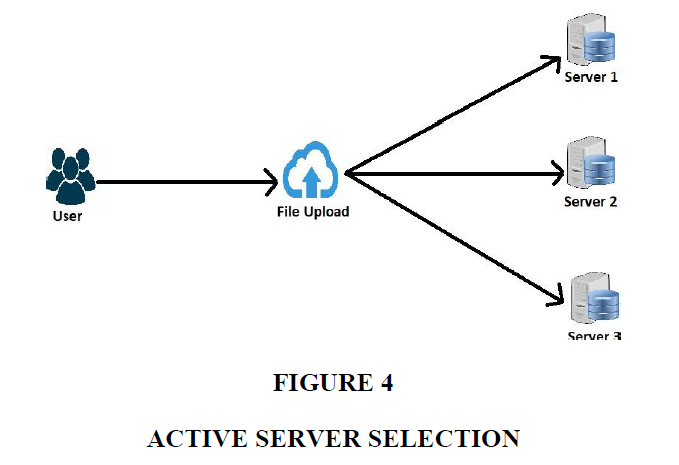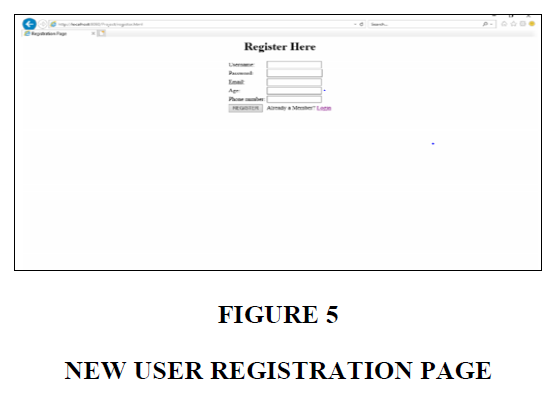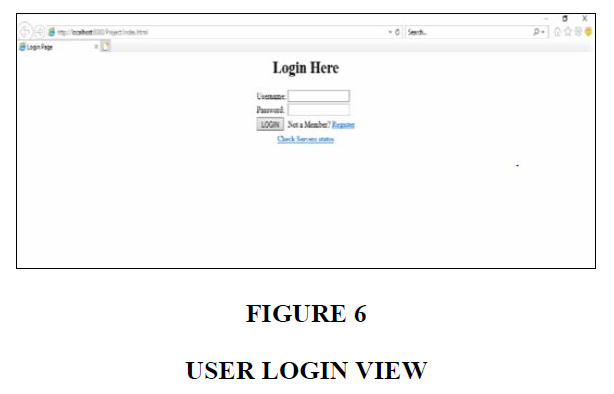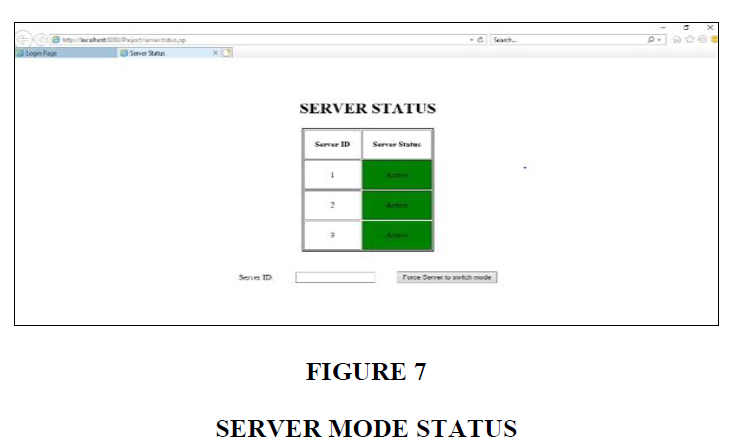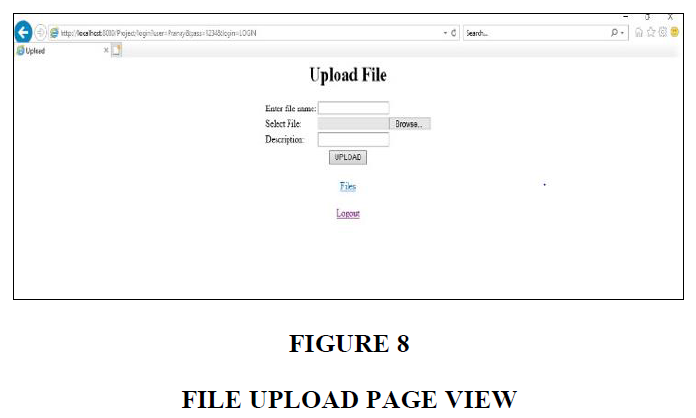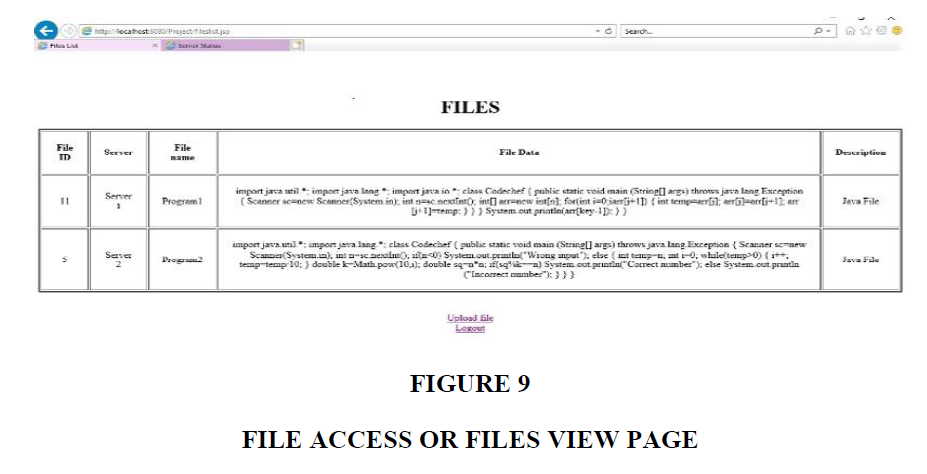Research Article: 2021 Vol: 24 Issue: 5
Advanced energy efficient scheduling of servers in cloud
Ranjeeth Kumar M, Kakatiya Institute of Technology and Science
Vuppu Shankar, Kakatiya Institute of Technology and Science
Katukuri Pranay Reddy, Kakatiya Institute of Technology and Science
Meeri Pelli Sathvika, Kakatiya Institute of Technology and Science
Pasham Tharun, Kakatiya Institute of Technology and Science
Myada Prathyusha, Kakatiya Institute of Technology and Science
Citation Information: Ranjeeth, K. M., Vuppu, S., Katukuri, P. R., Meeri, P. S., Pasham, T., & Myada, P. (2021). Advanced energy efficient scheduling of servers in cloud. Journal of Management Information and Decision Sciences, 24(5), 1-9.
Abstract
Cloud computing is one of the most important technologies for providing applications to people all around the world. Cloud computing provides a range of services to both users and consumers, including Platform as a Service, Infrastructure as a Service, and Software as a Service. The core system in cloud storage is data centers, which are made up of networked computers. In order to achieve energy efficiency in cloud computing, a variety of techniques and algorithms have been proposed, Virtualization, DVFS (Dynamic Voltage Frequency Scaling) are few among them. To meet the demand request, the cloud data centers are wasting a huge amount of energy. In cloud data centers, inactive computers use a large amount of energy. To minimize data center power usage, we could reduce the number of idle servers by pushing them into sleep mode and then getting them back to active mode as required. During the transition from sleep to active state, there are gaps in extra power usage. Cloud Computing has a major impact on the atmosphere and environment causing pollution and global warming. To reduce the impact of global warming, Green computing is the only way to go.
Keywords
Cloud computing; Green computing; Energy efficiency; Active state; Sleep state; Multi-Sleep modes.
Introduction
The growth of technological know-how and incorporating networks, storage and processing energy led to new technology of computing, known as cloud computing, or commonly recognized as the cloud. Cloud computing is a technical concept that enables on-demand access to a computing resource through the internet (Deiab et al., 2019). Some cloud computing traits consist of on-demand services, network get entry to by using web as a medium, shared resources with the aid of pooling resources collectively to be used by means of a couple of consumers and scalability with the aid of retaining elasticity of sources (Deiab et al., 2019). Cloud computing provides unique offerings based on three shipping models, namely:
1. Software as a provider (SaaS): this approves customers of cloud to get admission to the carrier’s apps (PA) over the internet.
2. Platform as a Service (PaaS): this allows customers to installation their apps on a platform which carrier provider of cloud (SPC) provides.
3. Infrastructure as a Service (IaaS): this allows customers to rent, store, method in an infrastructure provided via SPC.
The unique methodologies to have power efficiency in cloud by means of introducing some of the modern-day proposed options as servers load balancing, VM virtualization, VM migration and useful resource allocation (Paneru et al., 2017). There are two major methods for reducing datacenter energy consumption: (a) shutting down units and (b) scaling down efficiency. Cloud data center strength quality (Baghel & Rizvi, 2018). Changing the voltage/recurrence of CPU power in the interest of computing capacity (Gu et al., 2020) is the first phase. The former, also known as Dynamic Power Management (DPM), saves the most money since the average workload of cloud storage environments is usually less than 30% of its maximum capacity. However, after moving to the sleep state, the servers are unable to handle incoming requests automatically (Gu et al., 2020). During transformations, there are delays and higher power usage, which were not observed in this study. Furthermore, most existing jobs are assigned to a few rest states, and the rest states with shorter shift delays consume more quality when sleeping (Akhila et al., 2019). In this article, we look at how to reduce a data center's power usage by scheduling servers in multi-sleep modes and at different frequency ranges to minimize the total power of active servers (Palivela & Hari Babu, 2019). That is, schedule the staff (to complex state with selective frequencies or unmistakable rest states) in response to the arrival of customer demands, so that the total energy consumption of the data center may be reduced thus satisfying the QoS requirement (Palivela & Hari Babu, 2019).
The following decisions will be made as a result of the planning calculation:
1. The number of the servers which are in active state to be switched to sleep state based on the incoming requests,
2. The number of the servers which are in sleep state to be woken up to active state,
3. At what frequency does the server CPU be kept
Cloud computing frameworks in well-known give access to extensive pools of data and computational assets via an assortment of interfaces comparative to the existing network and high-performance computing useful resource administration and programming frameworks (Palivela & Hari Babu, 2019). The electricity utilization of under-used assets, mainly in a cloud environment, represents a tremendous measure of the real strength utilize. Cloud computing data centers are now more well-known for the provisioning of processing assets (Bin et al., 2009). The price and working prices of records facilities have start with the growth in processing limit. The first findings of an incitement-driven evaluation of heuristics for dynamic redistribution of VMs utilizing live movement in accordance with front-line CPU execution requirements are now accessible (Figure 1).
Background
Cloud computing is a subset of Grid computing and another kind of distributed and parallel computing. It's well-known as an evolving technology that allows for fair resource sharing among nodes, as well as energy-efficient and cost-effective technologies that aid in resource access, sharing, storage, and management (Deiab et al., 2019). Web-based data centers where different services are deployed. There are three forms of facilities in this category:
Software as a Service (SaaS), 2. Infrastructure as a Service (IaaS), and
Platform as a Service (PaaS) (Deiab et al., 2019). The implementation models for cloud computing can be classified into four groups depending on the requirements:
Private cloud,
Public cloud,
Community cloud, and
Hybrid cloud (Bin et al., 2009).
Green computing
Green Cloud Computing is also a cloud computing technique in which the resources and the energy are used very efficiently to reduce the effect of pollution and global warming on the environment, so that the goal of energy-efficiency of cloud data center improve, and the utilization of resources and electronic waste is reduced. The history of Green Computing can be traced back to 1987, when the World Commission released the study “Our Common Future,” with the aim of reducing the amount of resources used by cloud data centers (Figure 2).
The Green Cloud Computing have two aspects:
1. In Software aspect, to reduce the cloud data center's electricity usage,
In hardware aspect, it is to reduce not only the cloud data center's electricity use, but also to reduce e-waste and improve recycling.
In these days, the data centers and servers are managed and operated from a remote area, Green cloud storage is needed in order to render data centers more energy effective (Gu et al., 2020). Green Cloud infrastructure has several problems that are relevant to reducing electricity usage and constructing cost-effective Cloud resources. Green Cloud Computing is a collection of modern cloud computing models aimed at making cloud services more energy effective in terms of both cost and use.
Literature Review
The energy quality of cloud data centers has been the topic of various studies and analysis. A great amount of research work is going on to build a cloud data center which consumes very low energy by maintaining the data center performance in the cloud data center and not compromising on the work efficiency (Bin et al., 2009). The most energy efficiency problem is faced by the infrastructure provider, since it consumes more energy compared to the other services provided in the cloud (Achar et al., 2013). It is difficult to maintain track of electricity usage due to the massive growth in data uploads and downloads, as well as the transmission of data as the device or customer needs. Many different techniques and scheduling algorithms had been proposed by various engineers and scientists to achieve the goal of green cloud computing which Includes application scheduling (Kliazovich et al., 2013), DVFS , DNS, DPM , Virtualization etc., various resource allocation methods and memory reusing techniques are often utilized. Switching-Off the idle servers or the servers in sleep modes also reduce the cloud data center's electricity use (Table 1).
| Table 1 Comparison of Existing Energy Efficient Scheduling Algorithms | |||
| Algorithm | Approach used | Environment | Energy saved |
| DVFS | ILP | Cloud | 25% of the energy is saved. |
| Virtualization | VM | Cloud | More than 70% of the energy is saved. |
| DPM | COP and ILP | Cloud | 15-25% of energy is saved. |
| FFO and SPM | VM and VROP | Cloud | 75% of the energy is saved |
DVFS technique adjusts the server CPU frequency based on the number of requests that the server is receiving, which maybe affects the computational power of the CPU. Therefore, there is a need to also know the working of Virtual Machines to reduce the energy consumption more compared to DVFS without damaging the CPU’s computational power (Wu et al., 2013).
The reduction in power consumption will not make sure in the reduction of the energy consumption, because both power and energy refer to different functionality in the cloud data center. A major issue in cloud computing is that, although there is a lot of improvement in the energy efficiency techniques and the energy efficiency techniques are improving daily, however, owing to the increased number of cloud customers and the fact that cloud service companies are taking their time to integrate advanced technologies through their cloud data centers, there has been no progress in reducing cloud data center energy usage. The cost for cooling the data centers is 53% of the total cost of the cloud data center for doing its operations (Elnozahy et al., 2003). Therefore, for cloud service providers it is very important to reduce energy utilization to provide the best services to their users or customers for very low price.
As a consequence, the researchers argue that “it is important to reduce both electricity use and energy costs.” As a result, there is a lot of studies being done to build energy-efficient data centers and reduce energy costs (Wu et al., 2013).
Proposed Work
We proposed Advanced Backtracking algorithm and MultiSleep modes technique to achieve Energy-Efficiency of a server. We have developed a simulated version, actual project can be developed with the same procedure, but with multiple computers/servers. In this simulated version of the project, we had created databases which resemble the computers/servers in the actual project. The project contains the following modules:
1. User Registration: Helps a new user to register/signup as a user.
2. User Authentication: Helps to authenticate the user whether the user is already registered or not.
3. Server mode manipulation: Helps to switch the mode of servers from active state to sleep state and vice versa using Multi-Sleep modes technique.
4. File Upload: Helps the user to upload files to the Databases using Advanced Backtracking algorithm.
5. Files Access or Files view: User can view all the files which are there in all the Databases.
The Data flow of this project can be expressed by the following flowchart (Figure 3):
Advanced Backtracking Algorithm
Advanced Backtracking algorithm uses the backtracking algorithm, which traverse through all the servers (Databases) one by one until it finds a server which is in active state. This algorithm is used to check the modes of the servers in the Cloud Data Centre, whether the servers are in sleep mode or in active state. This algorithm is responsible to search the active server in the cloud data centre. If a server is in sleep mode, then the algorithm backtracks itself to find the mode of the next server. If all the servers in the Cloud Data Centre are in sleep mode, this algorithm will call a method known as wake-up operations, which will put the first server into active mode (Figure 4).
Multi-Sleep modes
Multi-Sleep modes technique is used to switch the servers from one state to another state. This step can be done manually, or we can automate this step by passing some metrics to the technique. In our project, we have implemented manual techniques, by which we can switch servers from sleep state to active state and vice versa.
Implementation
As we implemented only simulated version of this project firstly, we have created four Databases, one of them is responsible for user registration and the other three can be simulated as three servers.
We then created webpages with the help of HTML and CSS, which will be our front end. To manipulate the data in the Databases we have used JDBC and JSP.
The following are the webpages and some output screens for the reference:
User Registration
User registration page is used to register new user details in the database that is used to authenticate the user (Figure 5).
User Authentication
User authentication page is used to verify the entered user details are valid or not. If valid, the user is redirected to the next page (Figure 6).
Server Mode Manipulation
Server Mode manipulation page is used to switch the states of the servers (Figure 7).
File Upload
File upload page is used to upload files into any of the three servers, which is determined by advanced backtracking algorithm (Figure 8).
File Access or Files View
File access or Files view page is used to retrieve all the files in the three databases and display them on the screen (Figure 9).
Conclusion
This Paper discusses the Energy-Efficiency of servers using Advanced Backtracking algorithm and multi-sleep modes. The referenced research papers are on energy-efficient scheduling techniques for servers. However, a major issue in cloud computing is that, although there is a lot of improvement in the energy efficiency techniques and the energy efficiency techniques are improving daily, however, owing to the increased number of cloud customers and the fact that cloud service companies are taking their time to integrate advanced technologies through their cloud data centers, there has been no progress in reducing cloud data center energy usage. This paper is focused on research that combined the Advanced Backtracking algorithm and Multi-sleep modes strategies to simulate server energy efficiency. Based on the work, using Advanced Backtracking algorithm and Multi-sleep modes together, the results of Energy-Efficiency can be observed. Through applying more measurements or criteria to the current methods, a much better or increased Energy-Efficiency may be created, which can result in sensible results and outputs that can be implemented into cloud servers.
References
- Achar, R., Thilagam, P. S., Soans, N., Vikyath, P. V., Rao, S., & Vijeth, A.M. (2013). Load balancing in cloud based on live migration of virtual machines. Proceedings of 2013 Annual IEEE India Conference (INDICON) pp. 1-5.
- Akhila, B., Srinivasu, N., Varalakshmi, A.V., Samyuktha, T.R. (2019). Energy Efficient Scheduling of Virtual Machines in Cloud Data Center. International Journal of Recent Technology and Engineering, 7(5S4), 815-822.
- Baghel, S., & Rizvi, M. A. (2018). Energy consumptions in cloud datacenters – a review. International Journal of Engineering Sciences & Research Technology, 7(8), 208-215.
- Bin, G., Yan, S., & Zili, S. (2009). The redefinition and some discussion of Green Computing. Journal of Computer, 32(12), 1-14.
- Deiab, M., El-Menshawy, D., El-Abd, S., Mostafa, A., & Samir Abou El-Seoud, M. (2019). Energy Efficiency in Cloud Computing. International Journal of Machine Learning and Computing, 9(1), 98-102.
- Elnozahy, E. N., Kistler, M., & Rajamony, R. (2003). Energy-Efficient Server Clusters. In: Falsafi B., Vijaykumar T.N. (eds) Power-Aware Computer Systems. PACS 2002. Lecture Notes in Computer Science, vol 2325. Springer, Berlin, Heidelberg.
- Gu, C., Li, Z., Huang, H., & Jia, X. (2020). Energy Efficient Scheduling of Servers with Multi-Sleep Modes for Cloud Data Center. IEEE Transactions on Cloud Computing, 8, 833-846.
- Kliazovich, D., Bouvry, P., & Khan, S. U. (2013). DENS: data center energy-efficient network-aware scheduling. Cluster Computing 16(1), 65-75.
- Palivela, S. J., & Hari Babu, B. (2019). Cloud Data Center Based Energy Efficient Scheduling of Servers with Multi-Sleep Modes. Journal of Engineering and Sciences, 10(12), 66-68.
- Paneru, D. R., B. R., M., & Naik, S. (2017). A SURVEY FOR ENERGY EFFICIENCY IN CLOUD DATA CENTERS. International Journal of Research -GRANTHAALAYAH, 5(4RACSIT), 63-68.
- Wu, X., Deng, M., Zhang, R., Zeng, B., & Zhou, S. (2013). A task scheduling algorithm based on QoSdriven in Cloud Computing. Procedia Computer Science, 17, 1162-1169.
